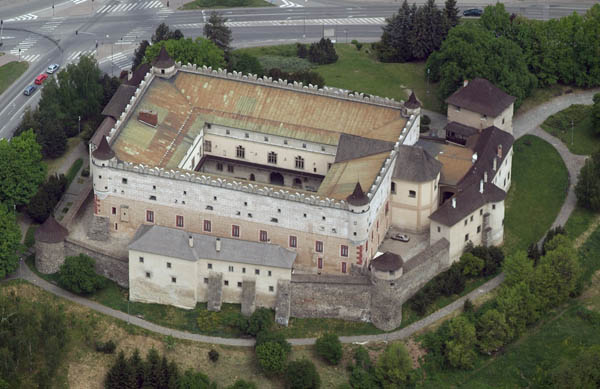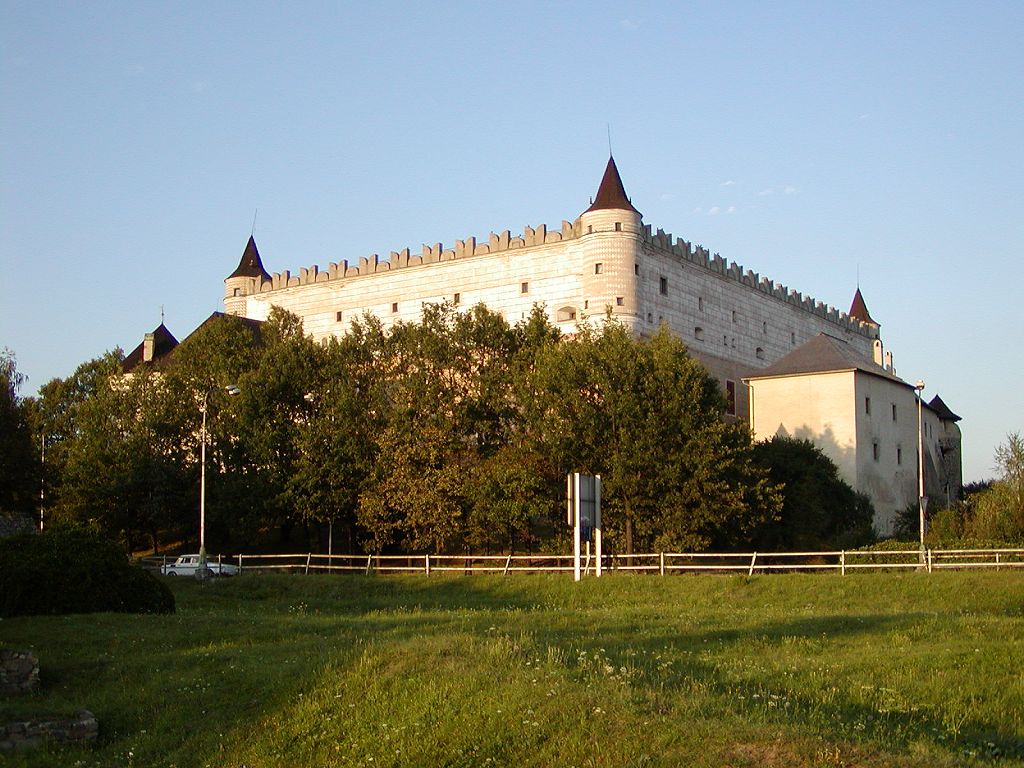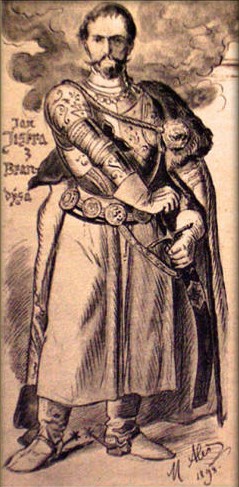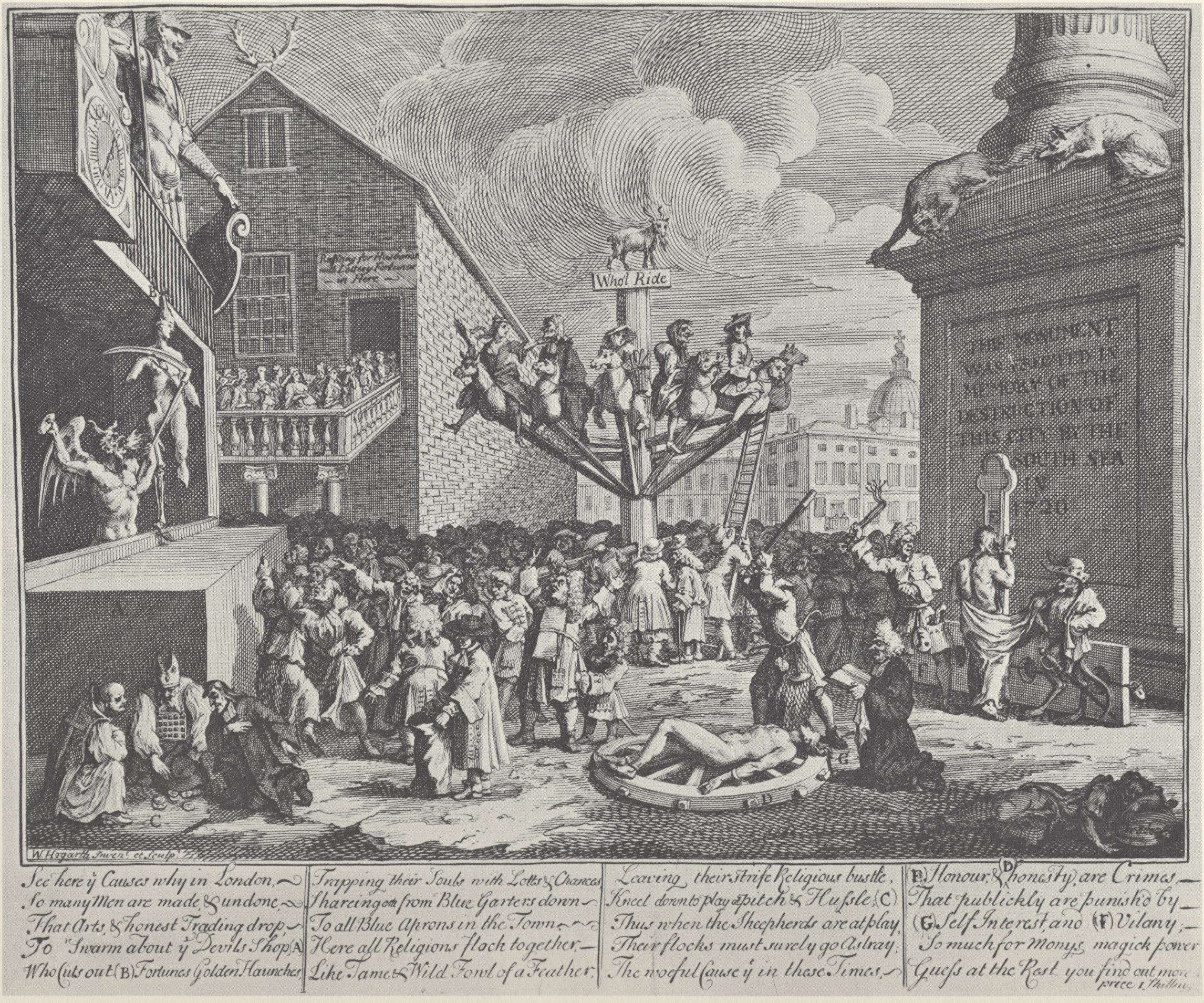|
Zvolen Castle
Zvolen Castle ( sk, Zvolenský zámok or incorrectly , hu, zólyomi vár) is a medieval castle located on a hill near the center of Zvolen, in central Slovakia. It was a part of the Kingdom of Hungary from the 1370's until the Treaty of Trianon in 1920. The original seat of the region was above the confluence of Slatina and Hron rivers on a steep cliff in a castle from the 12th century, known today as Pustý hrad (meaning "Deserted castle"). Its difficult access had consequence in relocation of the seat to the new-built Zvolen castle, which was ordered by Louis I the Great as a hunting residence of Hungarian kings. The future queen regnant Mary of Hungary and emperor Sigismund celebrated their wedding there in 1385. Gothic architecture of the castle built between 1360 and 1382 was inspired by Italian castles of the fourteenth century. Italian masons also contributed to a Renaissance reconstruction in 1548. The last major reconstruction occurred in 1784, when the chapel was r ... [...More Info...] [...Related Items...] OR: [Wikipedia] [Google] [Baidu] |
Zvolen
Zvolen (; hu, Zólyom; german: Altsohl) is a town in central Slovakia, situated on the confluence of Hron and Slatina rivers, close to Banská Bystrica. It is surrounded by Poľana mountain from the East, by Kremnické vrchy from the West and by Javorie and Štiavnické vrchy from the South. Zvolen is a seat of a county (Zvolen District). It is also an important transportation hub in Slovakia. Etymology The name is of Slovak (Slavic) origin meaning "the chosen one, splendid, excellent". The Hungarian ' and the German ' were derived from the Latinized form ' (earliest mention 1135). An adjective "Old" (german: Altsohl, sk, Starý Zvolen, la, Antiquum or Vetus Solium) distinguish Zvolen from Banská Bystrica (german: Sohl, Neusohl). History Zvolen has been inhabited since the Paleolithic. In the ninth century, a Slavic settlement (today the Môťová neighborhood) became a regional center of what is now central Slovakia. Zvolen remained the capital of Zólyom County unt ... [...More Info...] [...Related Items...] OR: [Wikipedia] [Google] [Baidu] |
Baroque
The Baroque (, ; ) is a style of architecture, music, dance, painting, sculpture, poetry, and other arts that flourished in Europe from the early 17th century until the 1750s. In the territories of the Spanish and Portuguese empires including the Iberian Peninsula it continued, together with new styles, until the first decade of the 19th century. It followed Renaissance art and Mannerism and preceded the Rococo (in the past often referred to as "late Baroque") and Neoclassical styles. It was encouraged by the Catholic Church as a means to counter the simplicity and austerity of Protestant architecture, art, and music, though Lutheran Baroque art developed in parts of Europe as well. The Baroque style used contrast, movement, exuberant detail, deep colour, grandeur, and surprise to achieve a sense of awe. The style began at the start of the 17th century in Rome, then spread rapidly to France, northern Italy, Spain, and Portugal, then to Austria, southern Germany, and Russia. B ... [...More Info...] [...Related Items...] OR: [Wikipedia] [Google] [Baidu] |
Buildings And Structures In Zvolen
A building, or edifice, is an enclosed structure with a roof and walls standing more or less permanently in one place, such as a house or factory (although there's also portable buildings). Buildings come in a variety of sizes, shapes, and functions, and have been adapted throughout history for a wide number of factors, from building materials available, to weather conditions, land prices, ground conditions, specific uses, prestige, and aesthetic reasons. To better understand the term ''building'' compare the list of nonbuilding structures. Buildings serve several societal needs – primarily as shelter from weather, security, living space, privacy, to store belongings, and to comfortably live and work. A building as a shelter represents a physical division of the human habitat (a place of comfort and safety) and the ''outside'' (a place that at times may be harsh and harmful). Ever since the first cave paintings, buildings have also become objects or canvasses of much artistic ... [...More Info...] [...Related Items...] OR: [Wikipedia] [Google] [Baidu] |
Castles In Slovakia
This is a list of castles in Slovakia. This list includes palaces, citadels and manor houses. These Slovak language, Slovak words translate as follows: #''hrad'', ''hrádok'' - castle #''zámok'' - correctly: château, commonly translated as castle #''pevnosť'' - fortress, citadel #''kaštieľ'' - mansion or manor house Preserved castles Castle ruins See also * List of castles in Europe * List of castles External links List of Slovak castles at castles.skSlovak castles at slovenskehrady.sk {{Castles in Slovakia Castles in Slovakia, * Lists of castles in Europe, Slovakia Lists of buildings and structures in Slovakia, Castles Lists of castles by country, Slovakia Lists of tourist attractions in Slovakia, Castles ... [...More Info...] [...Related Items...] OR: [Wikipedia] [Google] [Baidu] |
Beatrice Of Naples
Beatrice of Naples (16 November 1457 – 23 September 1508), also known as Beatrice of Aragon ( hu, Aragóniai Beatrix; it, Beatrice d'Aragona), was twice Queen of Hungary and of Bohemia by marriage to Matthias Corvinus and Vladislaus II. She was the daughter of Ferdinand I of Naples and Isabella of Clermont. Biography Beatrice received a good education at her father's court in Naples. She was engaged in 1474 and married Matthias in Hungary 22 December 1476: she was crowned Queen of Hungary in Székesfehérvár. The marriage secured an alliance between Hungary and Naples: In 1480, when an Ottoman fleet seized Otranto in the Kingdom of Naples, at the earnest solicitation of the pope he sent the Hungarian general, Blaise Magyar, to recover the fortress, which surrendered to him on 10 May 1481. Again in 1488, Matthias took Ancona under his protection for a while, occupying it with a Hungarian garrison. Beatrice exerted some influence in the policy of Hungary. She also had ... [...More Info...] [...Related Items...] OR: [Wikipedia] [Google] [Baidu] |
Matthias Corvinus
Matthias Corvinus, also called Matthias I ( hu, Hunyadi Mátyás, ro, Matia/Matei Corvin, hr, Matija/Matijaš Korvin, sk, Matej Korvín, cz, Matyáš Korvín; ), was King of Hungary and Croatia from 1458 to 1490. After conducting several military campaigns, he was elected King of Bohemia in 1469 and adopted the title Duke of Austria in 1487. He was the son of John Hunyadi, Regent of Hungary, who died in 1456. In 1457, Matthias was imprisoned along with his older brother, Ladislaus Hunyadi, on the orders of King Ladislaus the Posthumous. Ladislaus Hunyadi was executed, causing a rebellion that forced King Ladislaus to flee Hungary. After the King died unexpectedly, Matthias's uncle Michael Szilágyi persuaded the Estates to unanimously proclaim the 14-year-old Matthias as king on 24 January 1458. He began his rule under his uncle's guardianship, but he took effective control of government within two weeks. As king, Matthias waged wars against the Czech mercenaries who domina ... [...More Info...] [...Related Items...] OR: [Wikipedia] [Google] [Baidu] |
John Jiskra Of Brandýs
John Jiskra of Brandýs ( cs, Jan Jiskra z Brandýsa; german: Johann Giskra von Brandeis; hu, Jiskra János; c. 1400 – c. 1469), in English sometimes referred as John Giskra, was a Czech strategist and mercenary soldier. John Jiskra came from the Moravian branch of the noble family Lords of Brandýs, he was possibly a son of Alšík of Brandýs. Jiskra spent his youth in Bohemia and partially also in Italy, where he – according to several sources – attended the battles of the Republic of Venice. In the Czech lands he became familiar with Hussite war strategies. Following the Battle of Lipany Jiskra, together with other Hussite soldiers, joined the army of Emperor Sigismund of Luxembourg and fought with Turkish troops in the region of Belgrade. In the service of Elizabeth of Luxembourg In his young age he was soldiering in several European countries, including Italy. He ended up in Hungary in the service of Sigismund of Luxemburg, King of Hungary and he continued to serve ... [...More Info...] [...Related Items...] OR: [Wikipedia] [Google] [Baidu] |
Tea Room
A teahouse (mainly Asia) or tearoom (also tea room) is an establishment which primarily serves tea and other light refreshments. A tea room may be a room set aside in a hotel especially for serving afternoon tea, or may be an establishment which only serves cream teas. Although the function of a tearoom may vary according to the circumstance or country, teahouses often serve as centers of social interaction, like coffeehouses. Some cultures have a variety of distinct tea-centered establishments of different types, depending on the national tea culture. For example, the British or American tearoom serves afternoon tea with a variety of small snacks. Asia In China, Japan and Nepal, a teahouse (Chinese: , or , ; Japanese: ; Standard Nepali: ) is traditionally a place which offers tea to its customers. People gather at teahouses to chat, socialize and enjoy tea, and young people often meet at teahouses for dates. The Guangdong (Cantonese) style teahouse is particularly famous ... [...More Info...] [...Related Items...] OR: [Wikipedia] [Google] [Baidu] |
William Hogarth
William Hogarth (; 10 November 1697 – 26 October 1764) was an English painter, engraver, pictorial satirist, social critic, editorial cartoonist and occasional writer on art. His work ranges from realistic portraiture to comic strip-like series of pictures called "modern moral subjects", and he is perhaps best known for his series ''A Harlot's Progress'', ''A Rake's Progress'' and '' Marriage A-la-Mode''. Knowledge of his work is so pervasive that satirical political illustrations in this style are often referred to as "Hogarthian". Hogarth was born in London to a lower-middle-class family. In his youth he took up an apprenticeship with an engraver, but did not complete the apprenticeship. His father underwent periods of mixed fortune, and was at one time imprisoned in lieu of outstanding debts, an event that is thought to have informed William's paintings and prints with a hard edge. Influenced by French and Italian painting and engraving, Hogarth's works are mostly sat ... [...More Info...] [...Related Items...] OR: [Wikipedia] [Google] [Baidu] |
Paolo Veronese
Paolo Caliari (152819 April 1588), known as Paolo Veronese ( , also , ), was an Italian Renaissance painter based in Venice, known for extremely large history paintings of religion and mythology, such as ''The Wedding at Cana'' (1563) and ''The Feast in the House of Levi'' (1573). Included with Titian, a generation older, and Tintoretto, a decade senior, Veronese is one of the "great trio that dominated Venetian painting of the ''cinquecento''" and the Late Renaissance in the 16th century.Rosand, 107 Known as a supreme colorist, and after an early period with Mannerism, Paolo Veronese developed a naturalist style of painting, influenced by Titian. His most famous works are elaborate narrative cycles, executed in a dramatic and colorful style, full of majestic architectural settings and glittering pageantry. His large paintings of biblical feasts, crowded with figures, painted for the refectories of monasteries in Venice and Verona are especially famous, and he was also the leadi ... [...More Info...] [...Related Items...] OR: [Wikipedia] [Google] [Baidu] |
Peter Paul Rubens
Sir Peter Paul Rubens (; ; 28 June 1577 – 30 May 1640) was a Flemish artist and diplomat from the Duchy of Brabant in the Southern Netherlands (modern-day Belgium). He is considered the most influential artist of the Flemish Baroque tradition. Rubens's highly charged compositions reference erudite aspects of classical and Christian history. His unique and immensely popular Baroque style emphasized movement, colour, and sensuality, which followed the immediate, dramatic artistic style promoted in the Counter-Reformation. Rubens was a painter producing altarpieces, portraits, landscapes, and history paintings of mythological and allegorical subjects. He was also a prolific designer of cartoons for the Flemish tapestry workshops and of frontispieces for the publishers in Antwerp. In addition to running a large workshop in Antwerp that produced paintings popular with nobility and art collectors throughout Europe, Rubens was a classically educated humanist scholar and diploma ... [...More Info...] [...Related Items...] OR: [Wikipedia] [Google] [Baidu] |
Slovak National Gallery
The Slovak National Gallery ( sk, Slovenská národná galéria, abbreviated SNG) is a network of galleries in Slovakia. It has its headquarters in Bratislava. The gallery was established by law on 29 July 1949. In Bratislava, it has its displays situated in Esterházy Palace (''Esterházyho palác'') and the Water Barracks (''Vodné kasárne'') which are adjacent to each other. The Esterházy Palace was reconstructed for the purposes of the gallery in the 1950s and a modern extension was added in the 1970s. The SNG also manages other galleries outside Bratislava: at the Zvolen Castle in Zvolen, at the Strážky mansion in Spišská Belá, in Ružomberok and in Pezinok Pezinok (; hu, Bazin; german: Bösing; lat, Bazinium) is a town in southwestern Slovakia. It is roughly northeast of Bratislava and, as of December 2018, had a population of 23,002. Pezinok lies near the Little Carpathians and thrives mainly .... The '' Mourning portrait of K. Horvath-Stansith'' is consider ... [...More Info...] [...Related Items...] OR: [Wikipedia] [Google] [Baidu] |









